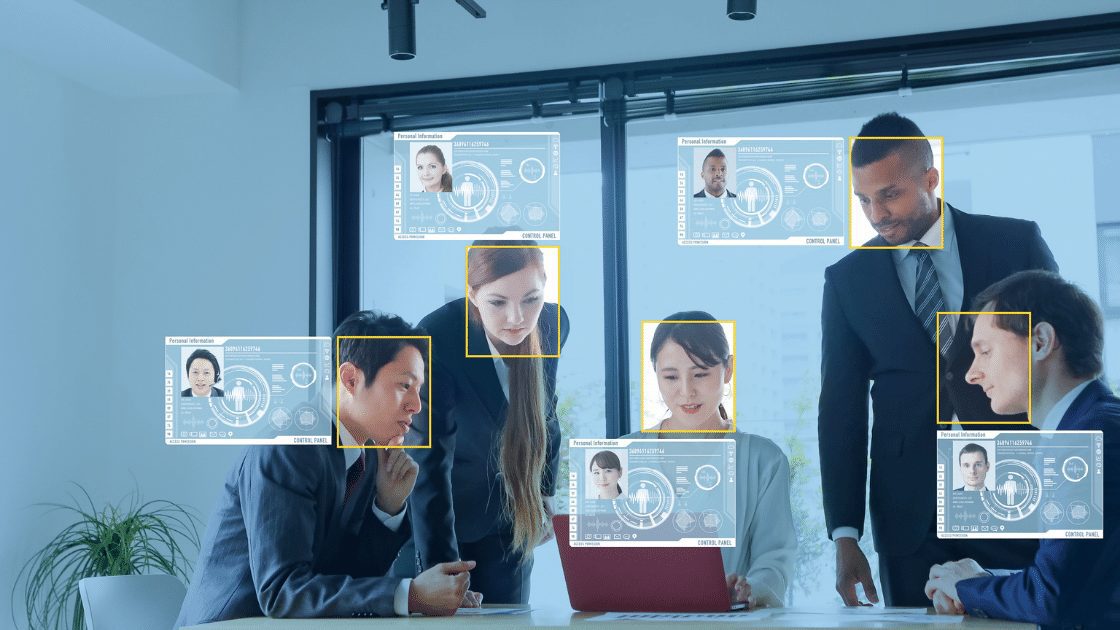As computers get smarter, there is a growing need for them to be able to recognize images. This is why there has been so much development in the field of image recognition over the past few years. This technology is becoming more and more important as it becomes easier for machines to understand pictures and videos.
- What is image recognition?
- How is it used?
- How computers are getting smarter
- The applications of this technology
- The impact of these advancements: What businesses and individuals can do with image recognition technology
- Limitations of the technology
- What are the drawbacks?
- What are the advantages of image recognition?
- Applications of image recognition: Some real-world examples
- The future of image recognition
- Startup Ideas around Image Recognition
- Examples of Image Recognition Companies
- Conclusion
What is image recognition?
Image recognition is the ability of a computer system to identify and understand images. The goal is to convert the image into something recognizable by computers. You could also say, that it´s the process of converting a digital image into text or symbols. This can be done through a variety of methods, including feature extraction, template matching, and neural networks. The more advanced the technology gets, the faster and more accurate this process becomes. By understanding images, a computer can interpret and recognize objects, faces, and other features in pictures. This can be used for a variety of purposes, such as identifying criminals in security footage or recognizing celebrities in photos.
How is it used?
One way image recognition is used is by facial recognition software, which can identify individuals in photos or videos. This technology is used for security purposes, such as in airports, and also for commercial applications, such as identifying customers in stores. Another use of image recognition is object recognition, which is used to identify objects in photos or videos. This technology is used in a variety of industries, including manufacturing, automotive, and retail.
How computers are getting smarter
Computers are getting smarter as technology advances. With each new iteration of hardware and software, computers are able to process and store more information than ever before. This allows them to learn from experience and become more efficient at completing tasks. Additionally, computer networks can now share data and collaborate on projects more effectively, making the entire system even smarter.
The applications of this technology
Image recognition is the process of identifying and recognizing objects in digital images. It has a variety of applications, including automatic tagging of photos, video surveillance, and object detection and tracking. Image recognition algorithms are used to detect and identify features in images, such as edges, corners, and regions of interest. These features are then used to identify specific objects in the image.
The impact of these advancements: What businesses and individuals can do with image recognition technology
There are a number of businesses and individuals that can use image recognition technology. The technology can be used to identify objects in an image, which can then be used for a number of purposes. For example, a business could use the technology to identify products in pictures taken by customers, which could then be used to improve their product catalog. Individuals could also use the technology to identify landmarks or animals in pictures they take.
Or retailers can use it to identify and track the items that customers are browsing or buying in their stores. This information can be used to improve the customer experience by providing them with tailored recommendations or special offers. Law enforcement agencies can also use image recognition software to help identify suspects or missing persons.
Limitations of the technology
Image recognition technology is limited in its ability to accurately identify objects in images. This is due to a number of factors, including the complexity of the objects, the variability in lighting and perspective, and the low resolution and quality of many images. Additionally, image recognition technology often relies on pre-determined object models, which may not be accurate for all objects.
What are the drawbacks?
There are several disadvantages of using the idea of automatic image recognition.
- It can lead to people being wrongly identified as criminals or terrorists.
- It can be very complex and difficult to get the system right. There are a lot of different factors that need to be considered, such as lighting conditions, angle, and size of the object. If these factors are not taken into account, the recognition software may not work correctly.
- The software can be fooled by pictures that have been manipulated or edited.
- The program may not be able to identify images if they are not in a standard format.
- Image recognition can be very slow compared to other forms of recognition, such as text recognition.
- And finally, the software may not be able to identify all images.
What are the advantages of image recognition?
There are many advantages to using image recognition software. Perhaps the most obvious advantage is that it can save time and effort by automatically identifying images. This can be especially useful for large organizations or businesses that deal with a high volume of images. Image recognition software can also help improve accuracy and consistency in image identification. Additionally, it can help protect against copyright infringement by identifying unauthorized use of images. Finally, image recognition software can be used to analyze and track trends in image usage over time.
Applications of image recognition: Some real-world examples
Image recognition technology is used in a variety of real-world applications, including facial recognition software, object recognition, tracking, and medical image analysis. In facial recognition software, for example, an image of a person’s face is scanned and matched against a database of images to identify the person. Object recognition software can be used to identify objects in images and videos and track their movement. Medical image analysis can be used to identify abnormalities or diseases in medical images.
The future of image recognition
The future of image recognition looks promising. With the continued advancements in technology, image recognition is becoming more and more accurate. This will have a number of implications for the way we live our lives. For example, it could be used to improve security by identifying people’s faces in crowds or to improve customer service by automatically recognizing products that customers are interested in. Additionally, it could be used to help those with disabilities by providing alternative ways to communicate.
Improvements to accuracy
There have been many improvements to accuracy in image recognition software in recent years. This is due, in part, to the increasing use of complex academic jargon in the field of artificial intelligence (AI). The use of more sophisticated algorithms and data structures allows for a greater degree of accuracy in identifying objects in digital images. In addition, the increasing availability of large training datasets has helped to improve the accuracy of image recognition software.
Faster processing times
The most important difference between traditional computer vision and modern image recognition is the number of processing cores that are used. Traditional computer vision algorithms are embarrassingly parallel, meaning that they can be split into many smaller tasks that can be processed on different cores. This allows the algorithm to be completed much faster than if it were run on a single core. Modern image recognition algorithms, on the other hand, are not embarrassingly parallel and cannot be split into smaller tasks.
Expansion into new markets
The concept of image recognition has been expanding into new markets in recent years as the technology has become more sophisticated. This includes the development of tools that can be used for facial recognition, as well as the expansion of image recognition capabilities into new areas such as retail and security. One of the main drivers of this expansion has been the increasing demand for image recognition solutions from businesses. This is due to the many benefits that image recognition can offer, such as improved efficiency and increased accuracy.
Startup Ideas around Image Recognition
There are many opportunities for startups to create innovative applications using image recognition technology. Some ideas include:
- A photo-sharing application that uses image recognition to organize photos by topic or event.
- A social media platform that uses image recognition to recommend similar users or content.
- A security application that uses image recognition to identify intruders or wanted criminals.
- A search engine that uses image recognition to find images within a specific category or location.
- An online store that uses image recognition to identify and tag products in photos.
- A photo printing service that automatically crops and prints photos to fit a specific size and shape.
- A mobile app that can identify objects in a photo and provide information about them.
- A website that can create custom designs using image recognition.
- A photo editing and sharing service that allows users to add filters, text, and other effects to their photos and share them with others.
- A mobile app that can identify and provide information about objects or landmarks in photos. A mobile app that identifies the people and places in photos.
- A social media service that uses image recognition to identify the people and places in a photo or video, in order to display them on a user’s profile page, as well as other locations relevant to the photo or video.
- A mobile app that can identify and provide information about the clothing or makeup a person is wearing.
- A website that can help people find the perfect outfit for a special occasion, based on their body type and personal style.
- A mobile app that can identify objects in a picture and provide information about where to buy them online.
- A website that can identify celebrities and provide information about their latest products.
- A social media platform that can identify products in user-generated photos and suggest where to buy them.
Examples of Image Recognition Companies
Google / Vision AI
Image recognition technology is becoming more and more popular, with Google being one of the leaders in this field. This technology can be used for a variety of purposes, such as identifying objects in photos or recognizing faces. Google has been using image recognition for a number of years, and has recently made some improvements to its technology. One example of this is the launch of Google Photos, which uses image recognition to help you organize your photos. Another example is the new Google Now feature, which can identify landmarks and businesses from photos taken by Android users. Google is also using image recognition to improve its search results, by identifying specific elements in photographs that are related to the search terms entered by users.
Facebook / Detectron 2
Facebook is working on image recognition software that can identify specific objects in photos. The software, which is still in development, will be able to identify things like flowers, animals, and people. Facebook plans to use the software to help users tag photos with specific names and descriptions. The software is also expected to be used for marketing purposes, allowing businesses to target ads to specific audiences.
Microsoft / Computer Vision
Microsofts Computer Vision is an AI service, that analyzes content in images and video. Computer Vision can enhance content discoverability, automate text retrieval, and examine videos in real-time. Further, this system provides text mining, native image content information, generation of descriptions, moderation of text, and understanding of people´s movement in physical space.
Conclusion
Overall, image recognition is a very powerful tool that has many potential applications and computer vision is growing more sophisticated every day. With the continued advancement of image recognition technology, we can expect to see even more amazing things in the future. We are on the cusp of a new era where computers can not only see but understand what they are seeing. This is an incredible advance that will have a profound impact on our world.
Peter is a solopreneur in Salzburg, Austria, a husband, and a family father. He runs a little publishing company, and blogs about starting and running online businesses. In his spare time, he enjoys hiking with friends and reading the Bible, and sometimes he takes a trip in his roaring old black 2001 Jaguar XJ8.






Hi There,
I’m Richard. If you are a student then you must know that at college and university level we have to buy a lot of TextBooks according to the subject of the course which are very expensive. This makes it difficult for students who do not have much money to buy these books. There is also a huge gap between supply and demand of TextBooks. Publishers keep changing editions (without any real changes in the books themselves) and force professors to get the new editions. This results in an additional burden on students.
So considering all these issues, We have launched our website CheapestDigitalBooks.com – We contacted authors and professors directly and received approval and agreement to sell the books digital( ePub/PDF) version directly to university and college students at a very cheap price. You can buy a book from our website at a discount of up to 70% off the price of a book from amazon.
Our motto is simple: Education should be accessible and affordable for EVERYONE!
If you are not student please share this website with all the students around you so that they might be benefited.
Thanks You
Richard C. Willis
Marketing Consultant
CheapestDigitalBooks.com